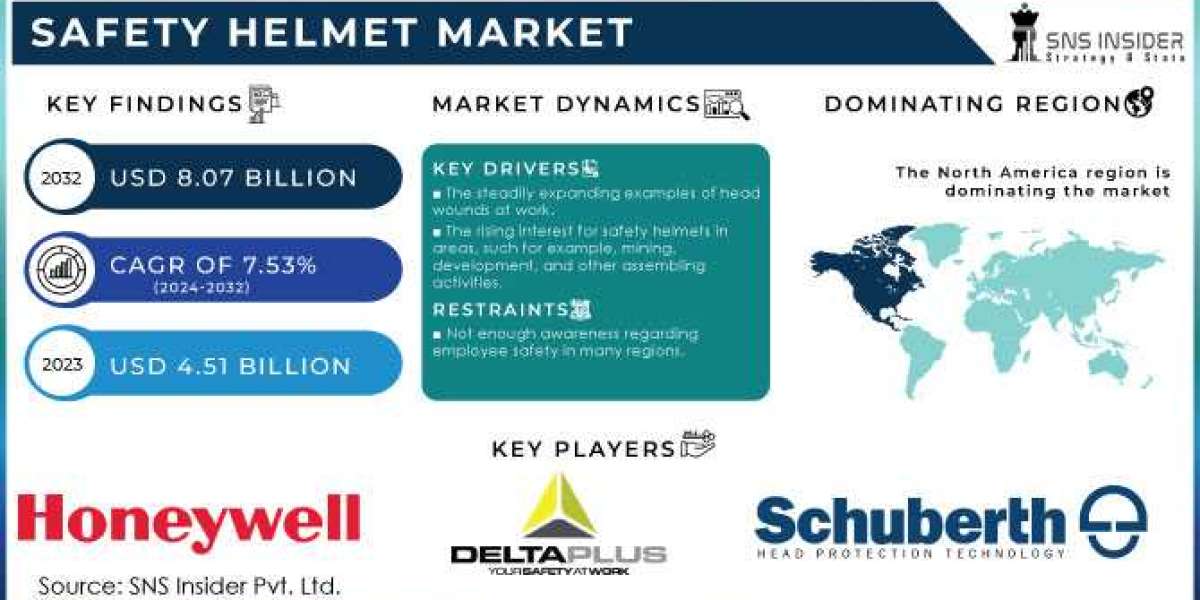Safety helmets play a crucial role in ensuring workplace safety by reducing the risk of traumatic brain injuries. These helmets are typically made from durable materials such as high-density polyethylene or polycarbonate, offering a combination of impact resistance, comfort, and durability. Modern safety helmets often include features like adjustable straps, built-in visors, ventilation systems, and sensors to monitor worker safety.
The Safety Helmet Market Size was valued at USD 4.51 Bn in 2023 and is expected to reach USD 8.07 Bn by 2032 and grow at a CAGR of 7.53 % over the forecast period 2024-2032.
Deivers:
- Stringent Safety Regulations: Government mandates and workplace safety laws drive the adoption of safety helmets across industries.
- Increasing Construction Activities: The booming construction sector demands enhanced safety measures for workers.
- Rising Awareness: Growing awareness of worker safety and employer liability encourages helmet usage.
- Technological Advancements: Smart helmets with integrated IoT sensors, communication systems, and monitoring features are gaining popularity.
Future scope:
- Development of lightweight yet highly durable helmet materials for better comfort.
- Integration of IoT and AI for real-time hazard monitoring and alerts.
- Expansion in sectors like sports, healthcare, and logistics for protective headgear.
- Adoption of eco-friendly materials to align with sustainability goals.
- Enhanced customization options to cater to diverse industrial needs.
Emerging trends:
- Use of Smart Helmets: Smart helmets are increasingly being equipped with advanced technologies such as GPS, cameras, and sensors for real-time tracking, hazard detection, and communication.
- Focus on Sustainability: There is a growing emphasis on using biodegradable and recyclable materials to produce eco-friendly safety helmets.
- Increased Research Investments: Significant investments are being made in research and development to enhance the comfort, durability, and adaptability of helmets for prolonged usage.
- Ergonomic Design Emphasis: Manufacturers are prioritizing ergonomic designs tailored to specific industry needs, ensuring better fit and functionality for users.
Conclusion:
Safety helmets are indispensable in ensuring the protection and well-being of workers in hazardous environments. With advancements in technology and a focus on sustainability, the industry is poised for innovation, offering smarter, more comfortable, and eco-friendly solutions to meet the evolving demands of workplace safety.
Read Full Report @ https://www.snsinsider.com/reports/industrial-robotics-market-1058
Contact Us:
Akash Anand – Head of Business Development Strategy
info@snsinsider.com
Phone: +1-415-230-0044 (US) | +91-7798602273 (IND)













